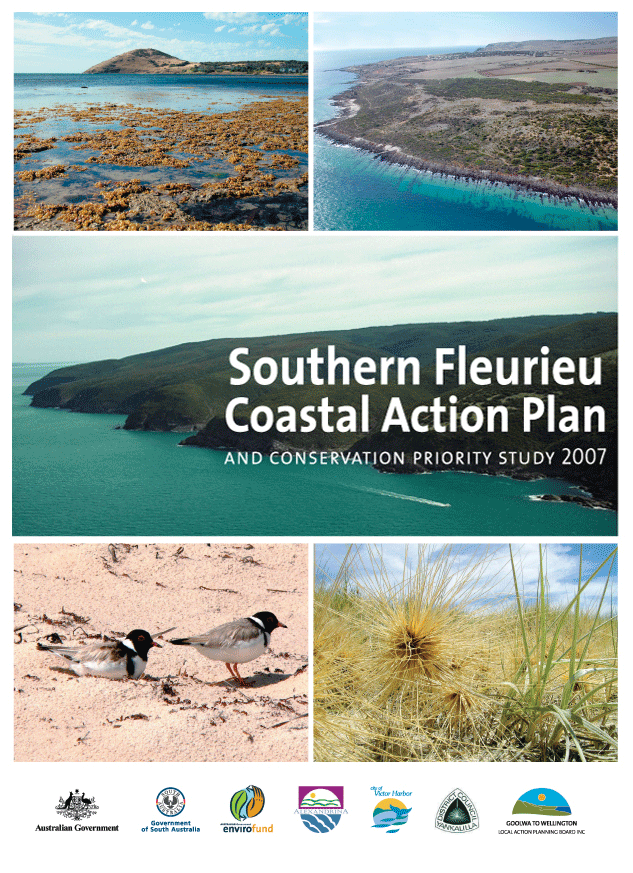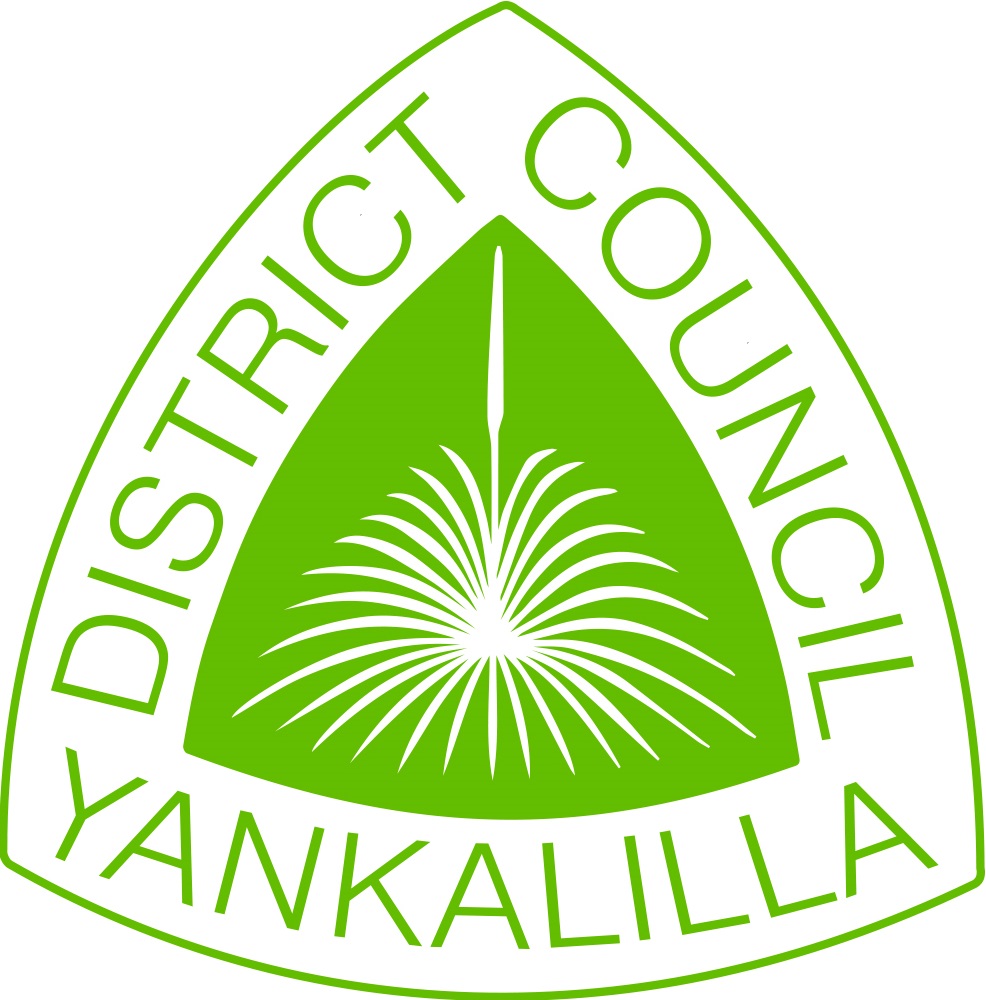Southern Fleurieu Coastal Action Plan & Conservation Priority Study 2007
 The Southern Fleurieu Coastal Action Plan and Conservation Priority Study Plan (Caton et al 2007) is prepared for the Department of Environment and Heritage, Adelaide & Mt. Lofty Ranges Natural Resource Management Board, Alexandrina Council, City of Victor Harbor, District Council of Yankalilla, and Goolwa to Wellington LAP.
The Southern Fleurieu Coastal Action Plan and Conservation Priority Study Plan (Caton et al 2007) is prepared for the Department of Environment and Heritage, Adelaide & Mt. Lofty Ranges Natural Resource Management Board, Alexandrina Council, City of Victor Harbor, District Council of Yankalilla, and Goolwa to Wellington LAP.
Authors: Brian Caton, Doug Fotheringham, Claire Lock, Matthew Royal, Ron Sandercock, Ron Taylor.
The goal of the study was to understand and facilitate the conservation, protection and maintenance of the regions' natural coastal resources and to establish conservation priorities and threatening processes for places and areas within the region.
The study used digital maps to collate and analyse and present information retrieved from government and non-government, community groups and local experts. Attached with the report are digital maps, which can be interrogated to provide information on a variety of conservation and threat themes.
The assessment defined coastal boundary based on natural coastal features such as dunes and salt marshes, at cliff tops a distance of 500m from the coastline was used.
The analysis and management issues of the coast is divided into "cells", or small sub regional landform units, on average 6kms; 27 cells have been defined. Conservation and threat values and a summary of conservation priorities and a summary of threatening processes, are summed up showing areas of high conservation values and high threat level. A series of management recommendations for the whole region have been identified.
If you would like a copy of the Southern Fleurieu Coastal Action Plan and Conservation Priority Study, a CD-ROM can be posted to you on request, at no charge or you can view sections of the Plan here.
Introduction:SFCAP Introduction  (4411 kb)
(4411 kb)
Themes & Databases:SFCAP Themes & Databases  (3026 kb)
(3026 kb)
Conservation Themes:SFCAP Conservation Themes  (12619 kb)
(12619 kb)
Threatening Processes:SFCAP Threatening Processes  (30851 kb)
(30851 kb)
Field & Priorities StudyAlexandrina Council: SFCAP Alexandrina  (14943 kb)
(14943 kb)
City of Victor Harbor: SFCAP Victor Harbor  (8791 kb)
(8791 kb)
District Council of Yankalilla: SFCAP Yankalilla  (11174 kb)
(11174 kb)
Appendices:SFCAP Appendices  (15540 kb)
(15540 kb)
Maps:SFCAP Maps  (4370 kb)
(4370 kb)
Bibliography:SFCAP Bibliography  (40 kb)
(40 kb)
Back Cover:SFCAP Back Cover  (2419 kb)
(2419 kb)
Reef Watch
Intertidal rocky shore monitoring at Lady Bay
During the time of year when the weather gets warmer, with sunny days and low tides, monitoring starts at our rocky shores of Lady Bay reef.
The aim is to have a core group of members to monitor the reef and everyone is welcome and you do not need to be from the area to join the group.
All sessions will include tea and coffee and light refreshments. For catering purposes, registrations are essential.
Where to meet: If coming from Normanville turn right at the Lady Bay sign on Main South Road. It is not far after the bridge. The Reef Watch logo will be placed on the turn off sign.
Reef Watch requires you to bring the following:
Appropriate footwear (e.g. gumboots (winter), sandshoes, river sandals, old runners or reef boots. Never work in: bare feet, thongs, loose sandals)
Appropriate clothing (long sleeves to protect against the sun and cold, warm clothing is also recommended) Hat, Sunscreen, Water and some food
Information
If you would like more information visit reefwatch .
Reef Watch is an environmental monitoring program run by the community and coordinated by the Conservation Council of South Australia. In the last year, assisted by the guidance and expertise of some of South Australia's leading marine biologists, the Reef Watch program has been extended to include intertidal rocky reefs.
Reefwatch and Council are interested in organising a volunteer group to monitor Lady Bay and we require your assistance. Reefwatch have developed methods which will help you learn about your local environment, and we will provide training, equipment and on-going assistance.
This will be a unique opportunity for the Yankalilla region to be part of the Reef Watch Intertidal Monitoring Program which will provide essential long-term data on the organisms and health of SA's rocky reefs.
The information gathered is used by Reef Watch to increase community awareness of marine environmental issues and is also available to government bodies, research institutions and school.
